Summer 2025: What’s Going on in Athens
A summer mix of cultural events...
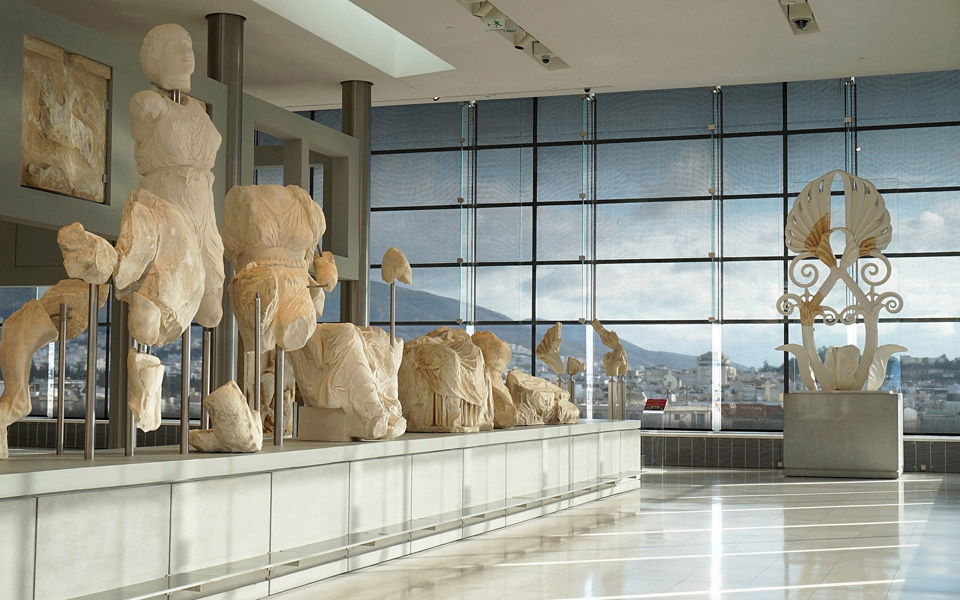
The Parthenon Gallery, on the top floor of the Acropolis Museum.
© Shutterstock
Now that Greece is emerging from its lockdown period, it is time to visit and reacquaint ourselves with the Acropolis Museum. We are very lucky to have such a world-class museum right here in our own backyard – actually front yard! – which means local residents, as well as visitors, should take advantage of this fresh opportunity to see it again.
Especially not to be missed is the recent major addition to the museum’s permanent exhibition: the ancient, frequently-rebuilt Athenian neighborhood now on display just beneath the modern building.
These past months have been, of course, a very unusual time, with normally traffic-packed Athenian streets virtually deserted. At the Acropolis Museum, too, life suddenly changed in mid-March.
The once-bustling galleries gradually emptied, and then were shut. This eerie period of quiet has been much like one of the chronological phases of abandonment on the archaeological site below. And, just as on that site, it is now followed by a fresh start, a reoccupation, an even greater flourishing, as inhabitants return and the next era of life begins…
The museum and at least a portion of its staff have not been passively quarantining, however, according to its president and director, Prof. Dimitrios Pandermalis. Instead, (with proper health precautions being taken) the spring of 2020 has been an opportunity for the Acropolis Museum to conduct a thorough “housecleaning,” complete necessary repairs, undertake other maintenance, pursue vital conservation projects on ancient artifacts and make improvements that will enhance the experience and enjoyment of visitors when they return.
Thus it is with great anticipation that the Acropolis Museum once again opens its doors and galleries to the public on 15 June 2020.
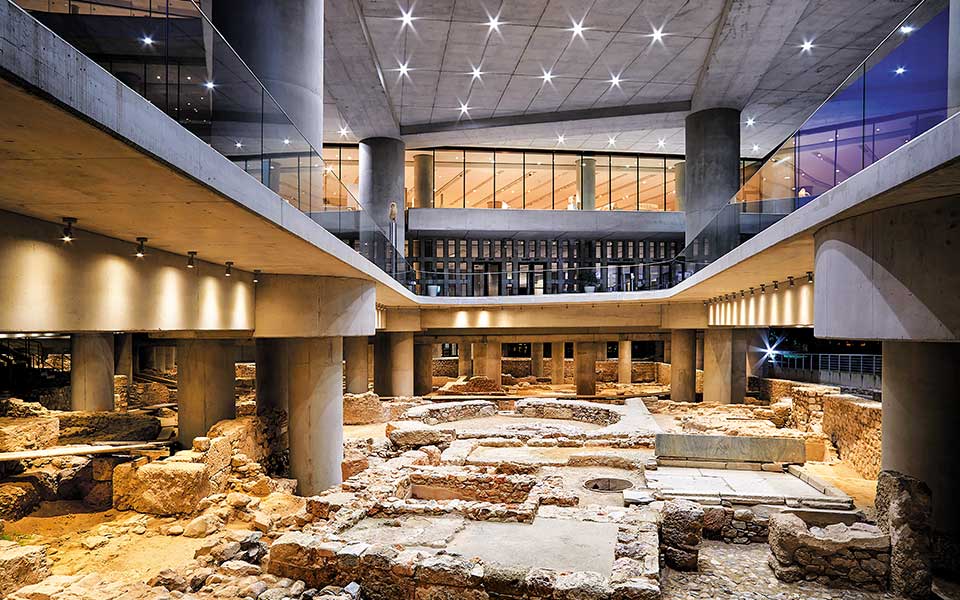
The private bath (“West Bath”) of an affluent Athenian’s city villa (2nd c. AD); the remains of a round tower from a later date behind it.
© Giorgos Vitsaropoulos
Through archaeological eyes, the Acropolis Museum, impressive in its fresh, cleanly designed and inspiring modern architecture, essentially amounts to the latest “layer” of inhabitation at the site known as the Makrigiannis plot, which has a history stretching back to antiquity.
Furthermore, the museum itself represents a newly constructed, improved version of the “Old Acropolis Museum,” still visible beside the Parthenon.
The Acropolis Museum, on its new site south of the Sacred Rock is now, in the month of June, about to celebrate its eleventh anniversary of operation. The people that make it all happen for the visitors every year are a dedicated, extensive community; from Pandermalis and the supervisory board to the exhibition designers, program coordinators, archaeologists and conservators; the artisans who create elegant, exacting reproductions of artifacts right on the premises; the people who administer and promote the museum; the building’s support staff; the exhibition guards; and those who run the ticket and information desks, shops, eateries and cloakroom!
Likewise, the ancient neighborhood revealed below the museum building was once also home to a bustling community full of life, similarly peopled by adults, teenagers and young children, but likely also by some animals – including dogs, cats, small livestock and poultry.
By late antique and early medieval times – the remains of which are most visible on the archaeological site today – the district had become a honeycomb of walls separating interior rooms, outdoor public areas, streets and narrow passageways. Identifiable among the ruins are humble houses, shops, baths, drains, cisterns, mosaic floors, workshops and a sprawling, once-lavish urban villa equipped with a circular tower-hall.
Now missing from these tranquil spaces are the residents who came from all walks of life – workers, skilled craftsmen, modestly attired women, middle-class homeowners and their more affluent neighbors, one of whom appears to have been a local aristocrat or high-ranking Late Roman/Early Byzantine official.

The pedestrianized Makryianni St.
© Clairy Moustafellou
Archaeologists have traced the earliest human activity on the Makrigiannis plot back to the 4th millennium BC, when Late Neolithic people settled on the Acropolis’ slopes. Within the approximately 11,000 sq. m excavation area, necessitated by the construction of the new Acropolis Metro Station and the Acropolis Museum, beginning in 1993, partial house floors and handmade pottery were discovered, dating to about 3500-3100 BC.
The plot’s name stems from the historic figure General Ioannis Makrigiannis (1797-1864), who once owned land and residences in the vicinity. Today, about 4,000 sq. m of the long-inhabited archaeological site are visible for visitors.
During the Geometric era in the 9th c. BC, a lightly populated but more distinct residential neighborhood began to emerge, which remained outside the city’s circuit of fortifications until the Classical period. With the onset of the Peloponnesian War and the district’s incorporation into the walled city in the late 5th c. BC, the neighborhood saw significant changes, including greater orthogonal planning and more densely built dwellings. Some of the deepest deposits of remains on the site can be seen in the southwest, where especially the earlier phases of House Θ (5th, 3rd c. BC) have been brought to light from beneath more than 2 m of successive later constructions.
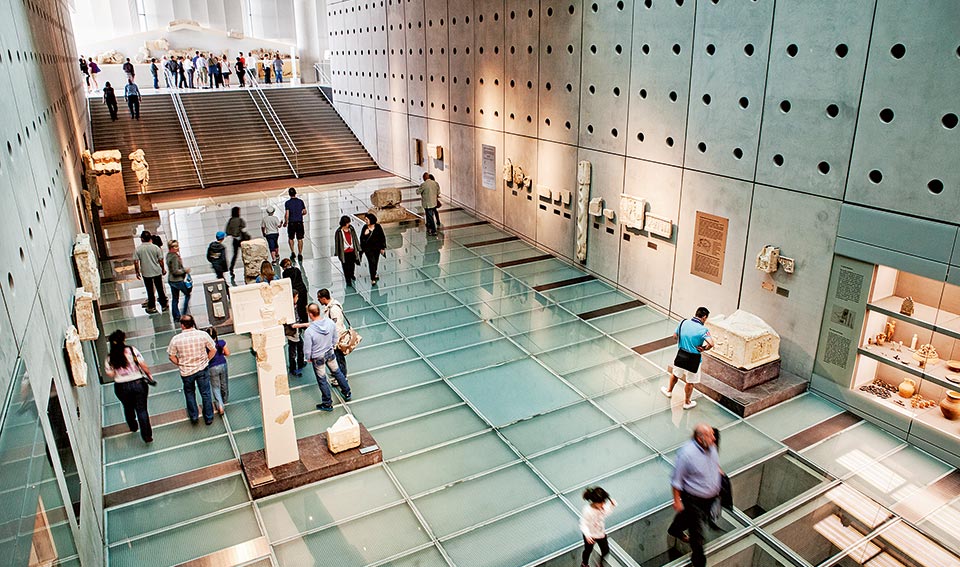
General view of the South Slopes Gallery
© Vangelis Zavos
Further changes, followed by disaster, came to the district in the 1st c. BC, when a dense street network was established, along with many courtyard houses, shops and workshops. Unfortunately, this burst of prosperity was snuffed out by the Roman general Sulla, who besieged Athens in 86 BC and destroyed much of the city. Afterwards, the area of the Makrigiannis plot became more industrial, as numerous workshops were founded.
Another boom of activity flared up in the 2nd c. AD, as larger houses appeared, often with colonnaded courtyards, colorful wall paintings and private latrines. From the 2nd c. BC to the 5th c. AD, four public latrines were installed that operated one after the other, while the owners of particularly well-to-do villas (e.g. Houses Ο and Ξ) commissioned the building of their own private baths.
Sadly, disaster again fell on the heads of the local residents, when the marauding Herulians invaded Athens and damaged much of the area in AD 267.
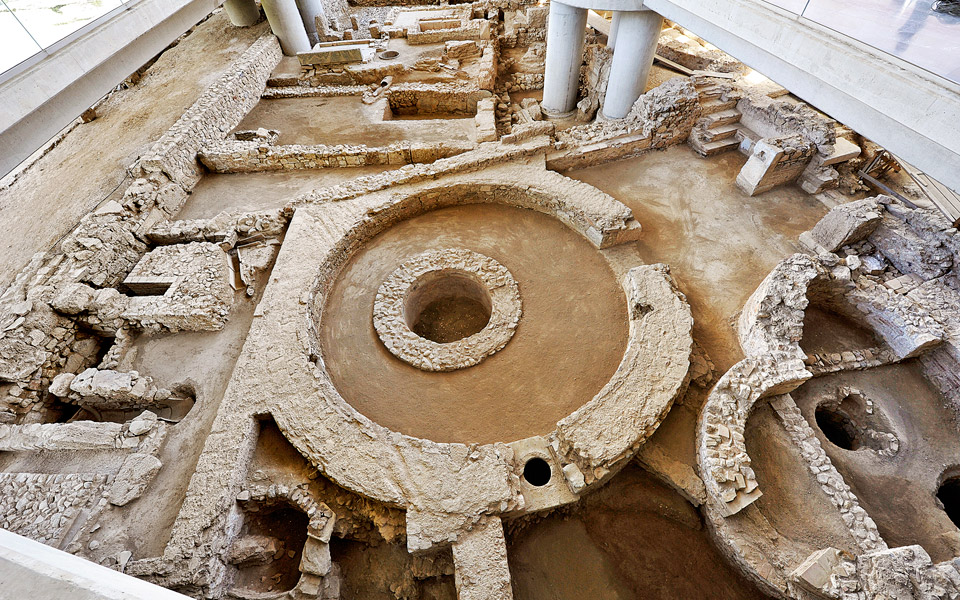
Circular room of building E at the archaeological excavation.
© Vangelis Zavos
Rebounding once more, the neighborhood rose again from its shambles with new constructions in the late 4th and early 5th c. AD. To this era can be dated Houses Γ, Η and ΣΤ.
A peak of prosperity was reached in the mid-5th c. AD, when Building Z was erected – an expansive, luxuriously designed and appointed “villa urbana” that replaced two earlier villas. Building Z, and its later addition, Building E (early 6th c. AD), compose the centerpiece of the AM’s present-day archaeological excavation gallery.
The impressive, multi-level complex known as Building Z represents a large mansion organized around three courtyards. Its main entrance (visible beneath the AM’s exterior forecourt) had the form of a semicircular platform with a mosaic floor connected to a descending staircase. Arranged around or near the west courtyard and the central peristyle courtyard were various semi-public and service rooms, including a large apsidal reception hall and dining room (“triclinium”); a kitchen; another, larger triclinium; the so-called Central Bath; and a “nymphaeum” or water display/fountain. Private living spaces and bedrooms lay around the east courtyard.
Who was Building Z’s proprietor? Clearly, he was an affluent, influential member of the local community; a prominent patron who received and entertained friends and clients. Athens in the second half of the 5th c. AD was home to “figures of great economic and political influence,” writes archaeologist Stamatia Eleftheratou, the Makrigiannis excavation’s general supervisor, “including the Roman patrician, senator and archon Theagenes and many others. Among these personages likely belongs the owner of the Building Z.”
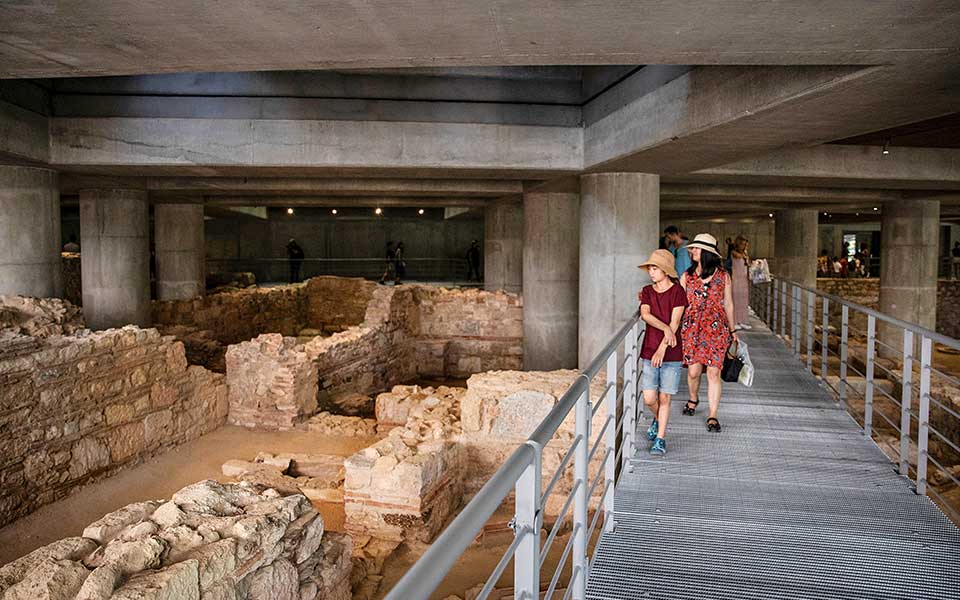
Steel walkways allow visitors a close-up view, while the low ceilings add a sense of intimacy.
© Reuters/Alkis Konstantinidis
The indications of affluence evident in the ancient neighborhood during the 5th and 6th c. AD, especially manifest in Buildings Z and E, reveal that Athens, although reportedly experiencing economic decline, was in fact thriving, according to present-day investigators.
Nevertheless, further destruction was suffered in the late 6th c. AD, after which the area again became increasingly industrialized with a spread of workshops. In its last era of full-scale inhabitation, new dwellings and workshops sprang up in the 10th-through-12th centuries, before the district was finally abandoned in the 13th c.
After a lengthy period of relative quiet, the Weiler Military Hospital was established in the early 19th c. on the northern part of the Makrigiannis plot, which today houses the administrative offices of the Acropolis Museum.
The extraordinary twists and turns in the history of the ancient neighborhood on the Acropolis’ south slope show there are valuable lessons to be learned here, as its economic and social fluctuations – much like those we are currently experiencing – simply amount to normal occurrences. Now, the AM’s excavation gallery brings you even closer to everyday life in ancient Athens.
A summer mix of cultural events...
From bustling street markets to Hydra’s...
Lost to earthquakes, swallowed by the...
Recycling is an age-old tradition in...